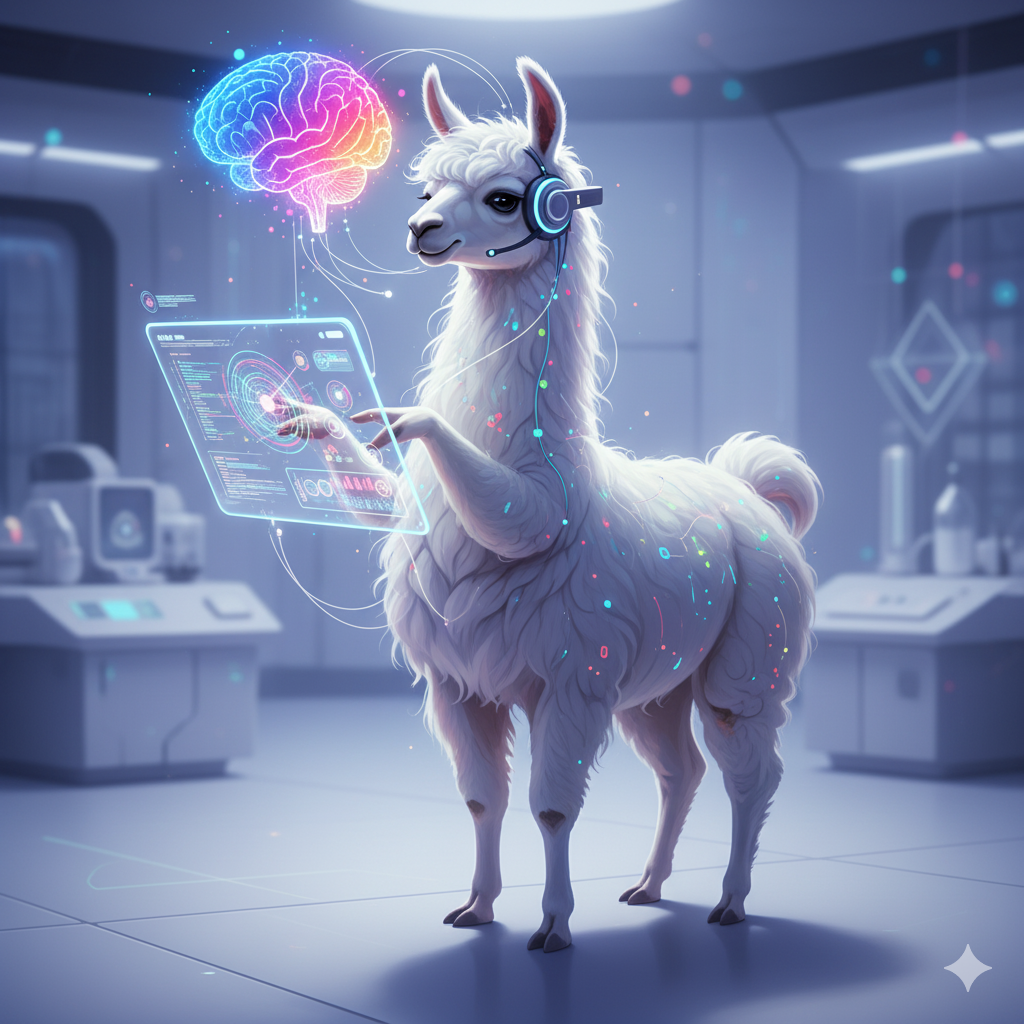LLMs and Llamas
IRL, llamas have a set of fighting teeth. IAI, llamas have a set of typing hooves, apparently. Credit: Google Gemini.
I’ve been known to have a fondness for camelidae (members of the camel family), which includes llamas. The fact that ‘llama’ and ‘LLM’ both start with two Ls is the entire basis for this articles title.
Moving on, let me start with: WOW! As part of my adventures in AI-land, I’ve been using LLMs more often and for all kinds of things. And like vibe coding platforms, the doors they open and thinking they invite are fantastic.
Don’t get me wrong, its work must be overseen. A tool is only as good as it’s handler, which is why AI is a great thought-partner for thinking people.
What I llike
Research - LLMs help transform expertise into action! The ability to get deep learning from a simple prompt in seconds (or minutes) is astounding. The ability to simplify, clarify, or build upon ideas within those findings in the moment is profound. As in design, LLMs won’t replace people, but they will simplify tasks, change roles, and supercharge workflows.
Writing - The ability to create concise copy, easily modify language and tone, and transform a few bullet point into a solid first draft (or FPO content) is incredibly helpful. Like vibe coding, AI generated copy also provides a helpful way to get direct feedback because it feels real, which inspires people pay closer attention and consider the details sooner.
Image Generation - Similar to what I found during my HuggingFace frolics, the ability to generate images and videos continues to expand by leaps and bounds. These tools are also still in their infancy and will only get better with time. For some projects and purposes, like concept generation, AI images provide an incredible springboard to help designers (and illustrators) go farther faster.
What I don’t llike
When it comes to AI, my mantra is: trust buy verify. AI is an inspiring tool. It is also in its infancy. Uncertainty and ethical issues abound, so mindfulness and vigilance are required.
AI’s environmental impact is gravely concerning. Responsible use can’t be left to consumers who can see the benefits but not the costs.
Where and how each LLM gets its data is murky and can be underhanded. Plagiarism, copyright, and trademark infringement are real for creators.
As aggregators, the outputs depend on the inputs. As a result, details may not be factual, writing can feel jargon-y, and image creation abilities can vary widely. AI slop is also very real.
LLMs are eager to please are prone to making [stuff] up. This leaves a lot of people open to influence, which can be harmful to themselves and others.
AI is still very young, and new versions are replacing old ones at an incredible clip. Keeping up requires constant engagement and the knowledge that what you made today may be obsolete tomorrow.
We’re on the brink of reality being indistinguishable from AI generated alternatives, which will have sociological implications.
Overall impressions
I’m not Tom’s Hardware, so if you’re looking for the deep dive into all the things, you’re in the wrong pool. My take is simple, and my suggestion is simpler: THIS STUFF IS EASY TO USE. TRY IT!
By way of analogy, LLMs are like a siblings. They share a lot of similarities, like how they look and function. They also have unique personalities and characteristics.
Chat GPT (by Open AI) is like eldest sibling. As the first, it set the standard. It also tends to be bolder and more ambitious. Some love its confidence, while others feel it can get a bit overzealous.
Claude (by Anthropic) feels like the middle child. The creative bravado of number one is traded for greater focus applied to core competencies like coding. My developer friends love Claude.
As with Apple and Microsoft, Google offers a wonderful hybrid with Gemini. From deep research to image creation, Google seems to offer the best of two worlds with outputs that feel a bit richer.
What about … ???
Like extended families, there are a lot of LLMs out there. If you’re an MS evangelist, start with Copilot. If you love Elon, try Grok. Custom GPTs and Perplexity are next on my list. I also hear great things about NotebookLM, another Google product to created support research and learning from curated content.
It doesn’t matter if you start with what excites you most, or what’s most available. What matters is that you get started.
My favorite (so far)
Full disclosure. In addition to camelidae, I also tend to be a Google fan and Google Workspace user. So, it’s no surprise that Google is where I find myself starting and ending most of my journeys.
It’s probably also no surprise that I often use them interchangeably, and often together. For research, writing, and image creation, each LLM brings different skills to the table, so why not leverage them all?
In conclusion
While the stakes are high, the barriers are low, and the time is now. AI is already changing the game. Fortunately, each LLM makes it easy for you to try it out for zero dollars. So, be brave and jump in.
Tip One: Keep your thinking cap on!
These are early days for AI, so what we’re talking about today may be quite different tomorrow. Fortunately, the skills developed in using AI are transferrable.
Tip Two: Be careful what you choose to share!




